AirPods Max four years later: a missed spatial computing opportunity
At four years old, AirPods Max feel like a stagnant product that should be so much more, but the premium sound and Apple ecosystem features keep them from going completely stale.

AirPods Max review: missing out on the latest tech
December 15, 2020 was a lifetime ago in reality and in technology. The AirPods Max were revealed shortly after the iPhone 12 lineup, when the Lightning port was still going strong and Apple Intelligence was a twinkle in Tim Cook's eye.
As is usual, rumors began pouring out about a potential AirPods Max 2. The obvious features were USB-C, better chips for processing, and a folding design.
New AirPods arrived along with Apple Vision Pro and special features tied to the H2 chip. Those became tied to rumors of the AirPods Max update.
Four years later, Apple reveals the "new" AirPods Max with USB-C and updated color options. They have the same H1 chips, the same feature set, and the same design.
Needless to say, I'm disappointed and didn't buy the updated model, but that hasn't stopped me from using the original set. Thankfully, Apple's heavy-duty, aluminum, and stainless steel headphones still sound great and work over a headphone jack with an adapter.
AirPods Max review: missing features
AirPods Max are a feature-packed set of over-ear headphones, but four years is a long time to go without upgrades. Even so, the form factor does offer some benefit to users.
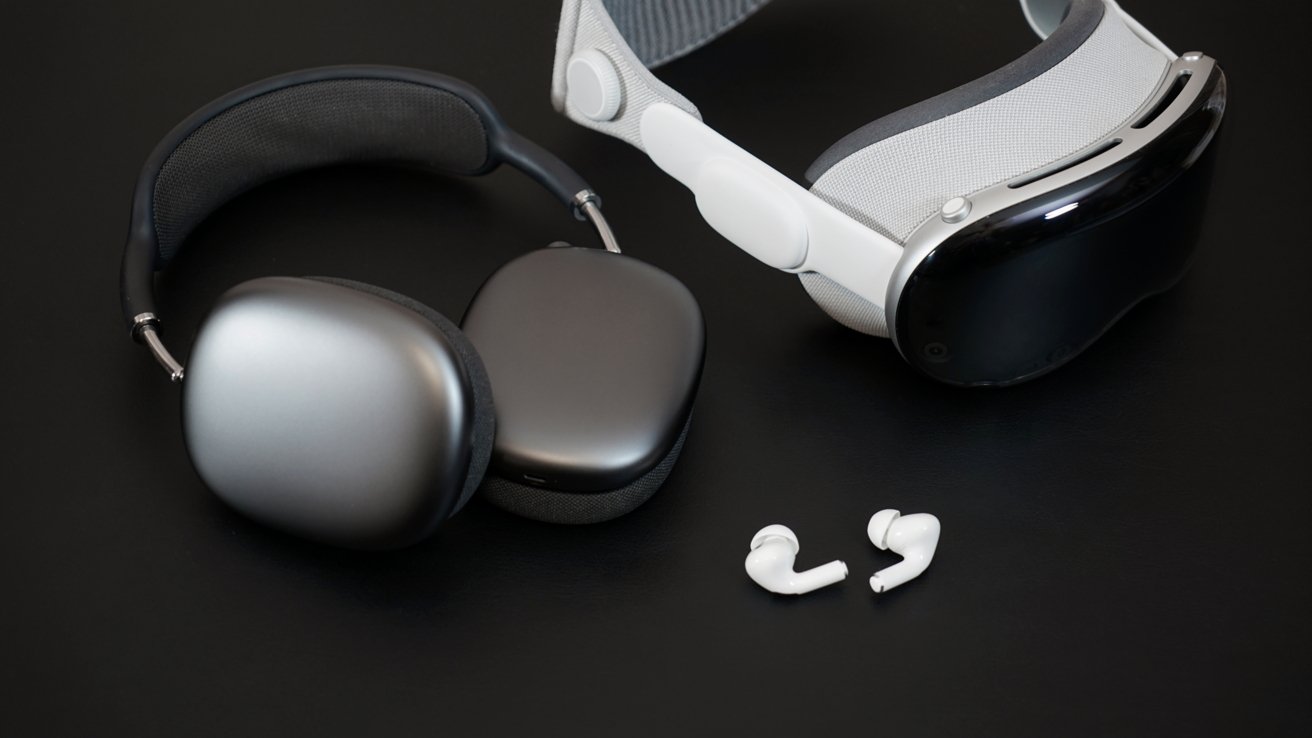
AirPods Max review: still part of Apple's ecosystem, but missing modern features
AirPods Pro 2 debuted with the H2 chip and 2x Active Noise Cancellation, which Apple says is on par with the ANC found in AirPods Max. However, that chipset includes several additional features that still haven't made their way to Apple's most expensive headphones.
AirPods Max do not support Adaptive Audio, Conversation Awareness, hearing health features, water resistance, the "Siri" minus "Hey" feature, Voice Isolation, Personalized Volume, or Conversation Boost. They also still use Bluetooth 5.0 instead of Bluetooth 5.3.
The most significant missing feature, however, is tied directly to the Apple Vision Pro. The H2 chip used in AirPods Pro 2 can directly communicate with Apple Vision Pro for an H2 to H2 Lossless connection.
AirPods Max review: design
The AirPods Max design was very divisive with their big aluminum cans, stainless steel band, and rubber canopy. They can't fold for storage and only sleep when in a specific case or bra-like holder Apple ships with the headphones.

AirPods Max review: the Digital Crown proved to be an excellent control device
The foam ear pads are designed for improved isolation and acoustics, but users can swap them out for third-party options. The initial and new colors pop, but the headphones stood out either way.
Even if Apple released a significant revision to AirPods Max, I doubt much would change externally. Apple doesn't seem to care about their shape or flexibility, so it seems like a stretch to expect a foldable frame.
The Digital Crown has proven to be an excellent control mechanism on every product it's used on. There's no need for awkward swipe gestures or head taps if the Digital Crown controls playback, Siri, and volume.
I'm not sure what I'd personally change about the design. It would be nice if Apple could achieve a similar look and feel with a lighter weight -- perhaps by trading stainless steel for titanium.
The ultra-premium headphones somewhat earn their price tag with their now iconic design. USB-C makes them better, but only just.
We'd have liked a headphone jack on the left side, but Apple prefers users to go through the Lightning port via a dongle. This all said, plugging in a wired connection to your AirPods Max and playing lossless audio will still deliver better sound than the wireless connection will. It just won't be lossless.
Using AirPods Max four years later
Despite missing modern features and a non-travel-friendly design, AirPods Max still stand up as an amazing set of headphones. There are likely better-sounding over-ear headphones at lower price points, but their integration with the Apple ecosystem still can't be beaten.
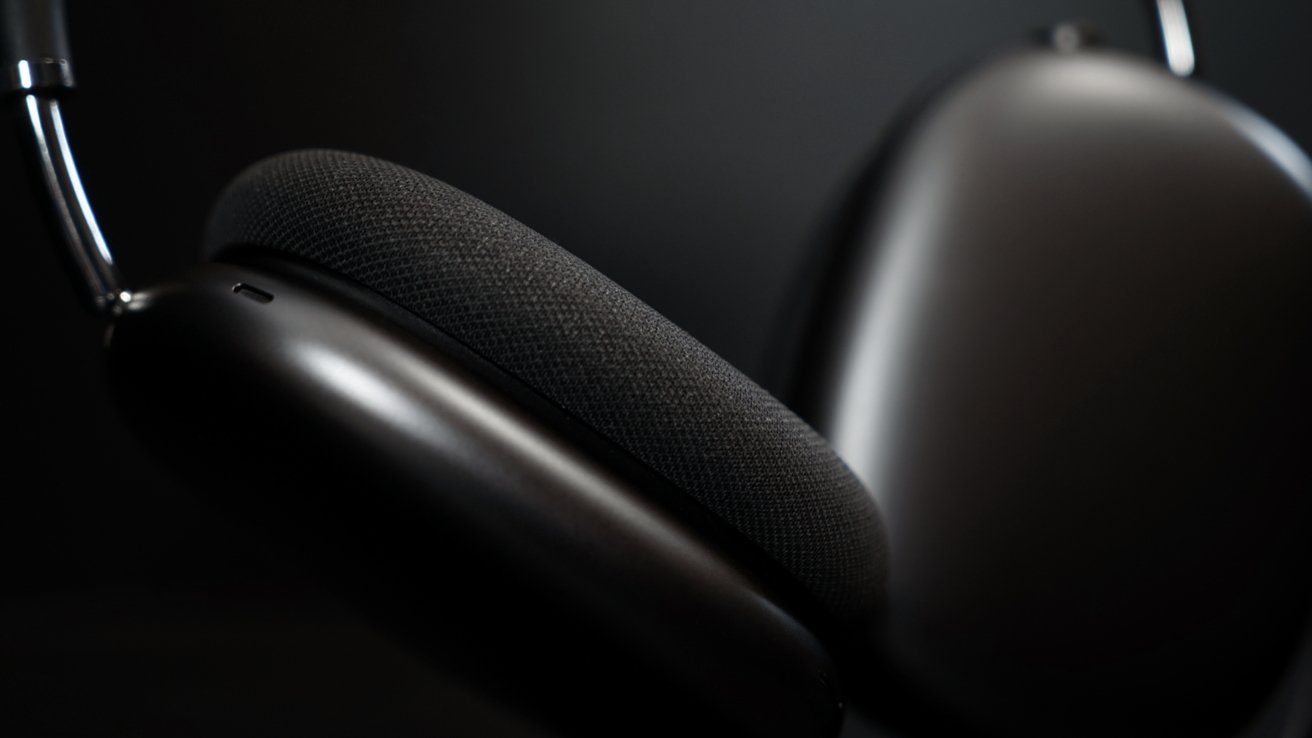
AirPods Max review: aluminum and stainless steel make for a striking, if heavy, design
Apple's custom 40mm drivers reproduce sound amazingly, and when using Apple Music, you're getting the best possible mix with Dolby Atmos and Dynamic Head Tracking. Even without Lossless, audio is crisp and lacks distortion at all volumes.
I prefer using AirPods Pro when wearing Apple Vision Pro simply because I usually have them in my pocket. AirPods Max are a more deliberate tool that I have to fetch from the dedicated charger in my office.
And since the AirPods Pro provide plenty of ANC on their own, I don't feel like I'm missing anything wearing them instead. In fact, there isn't a lot of benefit to AirPods Max over AirPods Pro when using Apple Vision Pro.
I tested "Wish You Were Here" by Pink Floyd and "Casualty" by Linkin Park. AirPods Max won in overall physical separation of the individual sounds and instruments and bass, but AirPods Pro 2 seemed to have a clarity missing from the larger headphones.
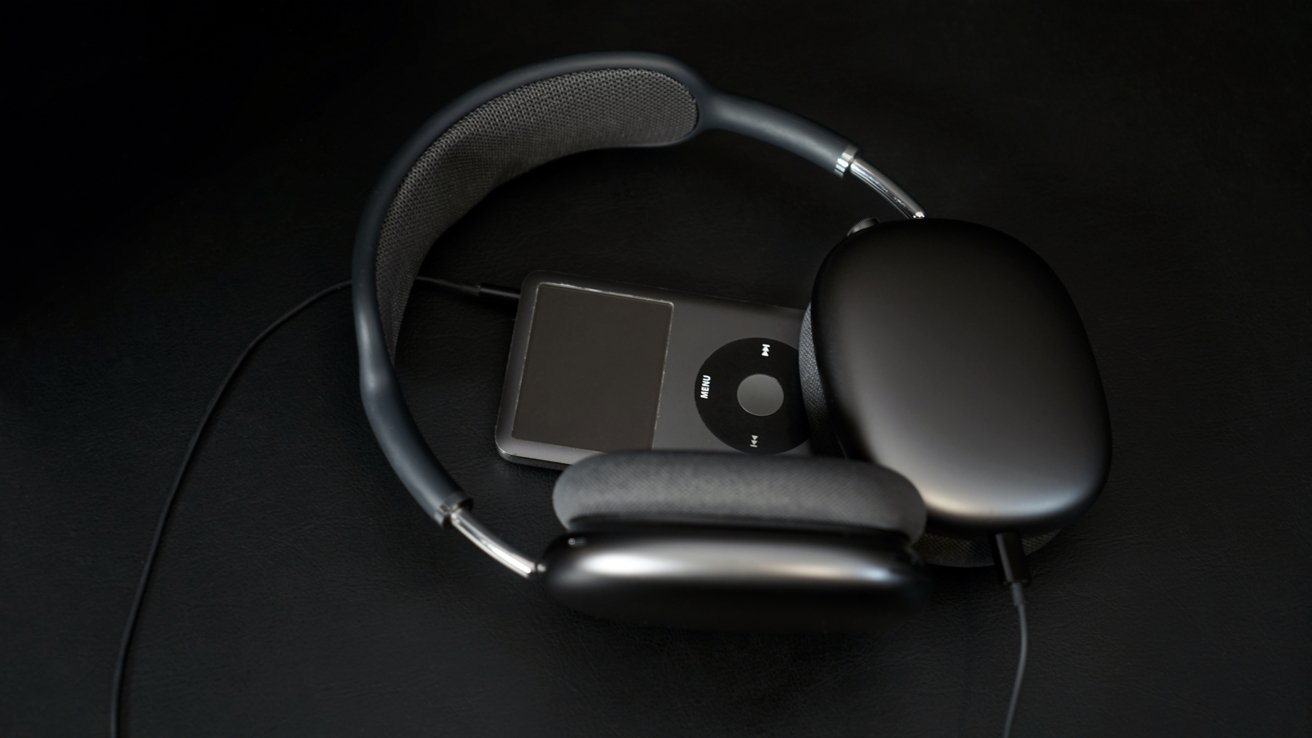
AirPods Max 2024 review: at least you can still use legacy media devices with an adapter
I'm not an audio expert, I don't have tens of thousands of dollars in gear, nor any giant opinion on DAC manufacturers, or the use of vacuum tubes. That said, the physics are clear -- it's due to the larger drivers moving much more air in AirPods Max. They deliver phenomenal bass, so mids and lows come through great, but that may drown out other sounds.
Funny enough, AirPods Pro may benefit simply from being smaller and shooting audio directly into your ear canal. Though, there may be some effect attributable to lossless audio, but I can't say for sure.
If anything, that's a compliment on how amazing the AirPods Pro are. It just goes to show how powerful the computational audio works on such tiny devices and makes me wonder how the H2 would improve AirPods Max further.
AirPods Max have a clear edge for film and TV thanks to their size. Bass-filled scenes in "Spider-Man: Into the Spider-Verse" and "Star Wars: The Last Jedi" just shine in those over-ear headphones.
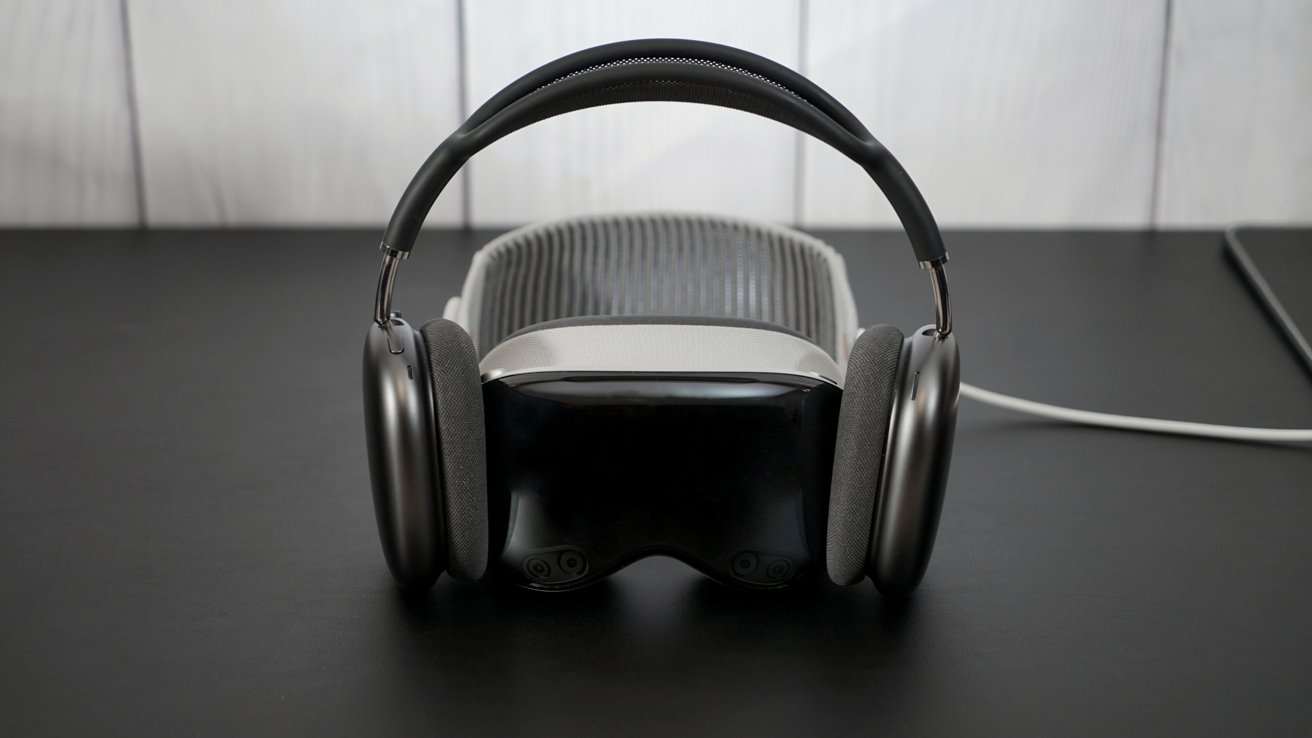
AirPods Max 2024 review: excellent headphones for immersive video, movies, and TV
They vibrate in a way that emulates sitting in a room with powerful subwoofers, recreating that cinema experience. Watching a movie on a giant screen in Apple Vision Pro, coupled with powerful ANC in over-ear headphones, is an incredible experience you can't get anywhere else -- except maybe a real IMAX theater.
AirPods Max are great for listening to music and watching movies, but I've had another use for them over the years -- podcasting. Sure, I could use any old wired headphones to listen to my microphone, but the AirPods Max are the ones I have on hand.
To do this, I need a Lightning-to-headphone jack cable sold by Apple for $35. It's pretty fragile, as I've had to replace it before.

AirPods Max 2024 review: a nice stand that can't charge the headphones it displays
When it comes to charging, storage, and travel, I don't do anything particularly special. The AirPods Max sit on a bespoke stand made by Lululook and inelegantly plug into a Lightning cable to charge. I only use the case when taking AirPods Max on a trip, which I rarely do.
I used AirPods Max a lot more in the first two years of their life, but AirPods Pro 2 have proven to be my go-to for audio. More heavy users have complained of the aging headphones losing battery faster, but I haven't noticed that myself.
Batteries do age and hold less charge, so I am aware that my current AirPods Max aren't going to last forever. I hope Apple releases a real updated version in the next couple of years so I can upgrade.
Even though Apple didn't update AirPods Max, their base technologies and sound do enough to keep them in regular rotation four years later. It just makes me wonder what an H2 version would be like.
AirPods Max 2024 review -- Hope for what's next
AirPods Max are Apple's biggest miss of 2024. The USB-C update and new colors did nothing to truly bring the headphones into the modern age.
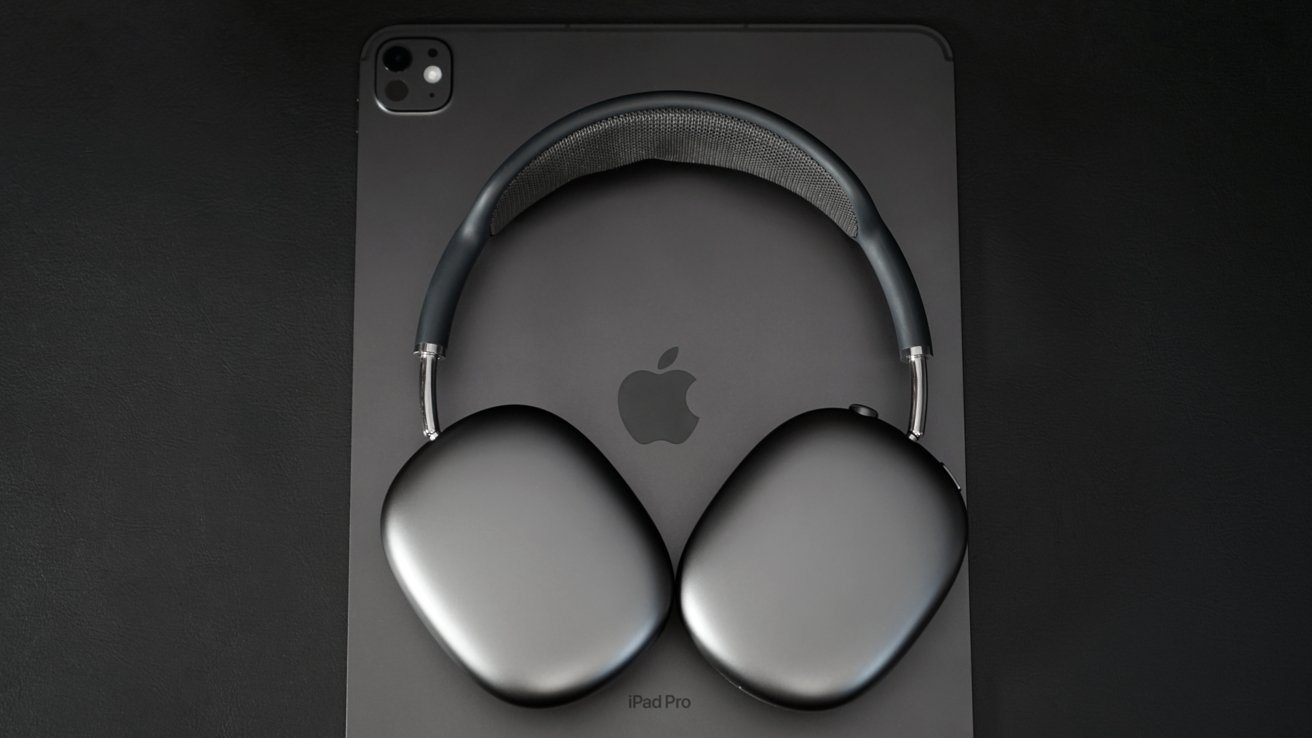
AirPods Max review: premium headphones with a tie into Apple's ecosystem
Sure, those with $550 to spare can get the new port. That is useful, but I can't justify it. All of my Lightning cables didn't burst into flames when USB-C shipped on the iPhone, after all.
AirPods Pro 2 are just too good that honestly, AirPods Max don't need to exist in their current iteration.
Yes, I like their sound for movies and bass-heavy music, and I use them for podcasts. However, if AirPods Max went away today, I'd just buy some Sony over-ear headphones for those functions instead.
That's where AirPods Max have fallen in my eyes. The must-have over-ear premium headphones of 2020 with amazing auto-switching and Dolby Atmos now feel redundant and replaceable.
I don't think Apple has given up on AirPods Max. It's obvious the company has other priorities like getting Apple Vision Pro off the ground. That said, it seems a shame that Apple's $3,500 spatial computing headset doesn't have a suitable Apple-made premium headphone to go with it.
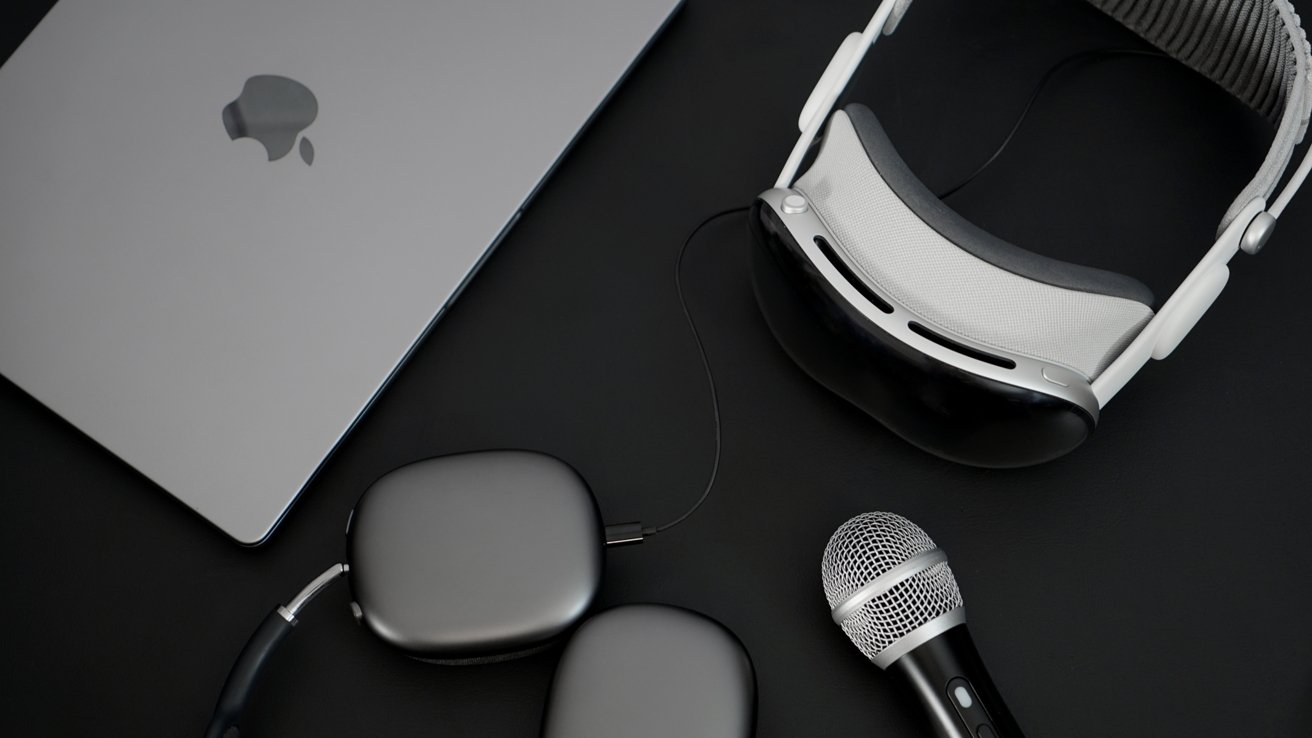
AirPods Max review: a great podcast companion, even with Apple Vision Pro in the mix
That's what I'm hopeful for -- AirPods Max 2 with a focus on enhancing Apple Vision Pro's spatial computing functionality. Visual fidelity is a big part of immersion, sure, but true 3D audio from big over-ear drivers would enhance that experience further.
If I had to pinpoint when such a revision would be announced, it would be alongside Apple Vision Pro 2. Some suggest an M5 model could arrive in 2025, but my bet is on mid-to-late 2026 -- which would be a good window for the AirPods Max 2.
AirPods Max 2024 review - Pros
- H1 enables Apple ecosystem features like auto switching
- Powerful ANC on par with AirPods Pro 2 thanks to over-ear design
- Transparency Mode still uncanny thanks to plenty of microphones
- Incredible audio quality for music, great bass for movies
- Wired option for audio jack
AirPods Max 2024 review - Cons
- Can't fold for storage
- No dedicated audio jack and no option for wired lossless audio
- H1 chip is dated, no Apple Vision Pro features
- Stainless steel makes for a heavy frame
- Outdated hardware with extravagant $550 price
Rating: 3 out of 5
AirPods Max are an excellent piece of hardware and have held up well over the years. They're not a good buy today unless you've got money to blow or have never owned a pair and just want them.
If you can, just buy AirPods Pro 2 (check sale prices) and wait for AirPods Max 2. If you can't, buy used, wait for a sale, or find some nice Sony over-ear headphones.
Where to buy AirPods Max
AirPods Max with Lightning can still be found at some retailers at a substantial discount. The USB-C model retails for $549, but it's currently on sale at Amazon, Best Buy and B&H.
Read on AppleInsider

Comments
I bought APM on the day it first dropped and for the two years plus thereafter, it was very, very rare to see another pair in the wild here in NYC. I honestly thought APM must have been a sales disaster for Apple. I actually didn't like wearing my APM outside of the house because I felt the very distinctive design and well-known high price tag essentially put a "Steal Me!" sign on my head. Anyway... by year 3, I started to see them show up more often, and over the past year, I feel like I see them everywhere now, like they've become the iPhone of headphones, even at 4 years old and the same high price. I don't know what explains this, but they seem to have been a late blooming success.
All that said, I'm like Wesley--I rarely use my APM any longer and never when I travel because I prefer AirPods Pro 2. And it's not just the convenience--the sound quality and noise cancellation of Airpods Pro 2 are just incredible. FWIW, I have the original Lightning case version and recently bought the USB-C case model on sale -- while the sound quality and noise cancellation are supposed to be the same, I think the USB-C version sounds somewhat better. It's not a huge difference, for sure, but I thought it was noticeable the first time I listened.
Apple designed the APM to have interchangeable parts. Most everyone knows the ear cushions are magnetically attached, but the steel canopy from is removable with a pin release (which Apple can turn into a button). So, all the parts are in the design to create an ecosystem to customize the headset. Making the headset have differing colors, including left to right, and allowing 3rd party head canopy frames would give the product momentum that other brands would find difficult to follow. Was hoping 3rd party canopy frames would be something they promote. Well, not yet. They really should.
They can do a lot of things with the product outside of the industrial design, imo. H2 chip is obvious, but I think they should add 256 GB, 1 TB NAND storage and have an APM application to manage it. The feature I'm thinking about is loading lossless music onto APM, or lots of lossy music, and play away without using Bluetooth. The storage will add cost, but audiophiles pay more to know that their lossless music isn't being derated or compressed or whatnot. Not streaming adds runtime.
That's not really different relative to cars where economy is $15,000 to $25,000, mid range is $30,000 to $60,000, and luxury would be $60,000 to $90,000. The current average new car price is around $45,000 right now.
People spending more are either audio nerds or professionals.
The IEMs that I prefer to AirpodsPro cost twice what AirpodsPro do and are still mid-range given high end ones start at 8x AirpodsPro pricing.
apple Ecosystem by damned.
1) Where does Apple intend to to go with these?
- Experiment?
- Platform for honing their spatial audio aspirations?
- One and done?
- Does Apple believe the APM is a success or a failure?
2) Was Apple simply testing the waters to see if there was a large enough market for these to sell with a very healthy margin?
- What drove the decision to go to market with APM?
- Did the original HomePod's huge market success drive Apple to try to grab another big chunk of market share from headphone makers who operate exclusively in the audio equipment domain? (Just kidding!) My point is that Apple is usually very good at being successful in markets that they are deeply committed to. Apple's efforts around the AirPods Max seem kind of feeble by comparison, especially when they've released another lower priced set of headphones (AirPods Pro 2) that absolutely kick ass.
3) Why didn't Apple simply ride the wave that their Beats subsidiary was establishing with this style of headphone?
- AirPods and AirPods Pro fit like a glove with Apple's biggest money maker, the iPhone. Small, wireless, the perfect everyday companion accessory.
- Beats already has a strong following with their big gaudy on-your-head headphones. Why not let Beats fold APM into their portfolio under the Beats brand?
- With a Beats logo on the APM they could have cost reduced it to attract more buyers. Beats headphones don't need the super premium materials and build quality the APM have - at a price.
I have no idea what's next for AirPods Max. They are excellent and very technologically impressive if you like "processed" music rendering, i.e., not studio monitors. They also have a few quirks that Apple does not appear to want to put any significant effort into addressing. The latest "update" is a snoozer. Things may change but based on what we're seeing now from the outside the AirPods Max seem to be slowing circling the drain. There may be some consolation in remembering that the original HomePod biggy seemed to circling the drain too, but Apple brought it back from what we thought was its death. There is hope.
The issue I have with them is that they cannot be used with MIDI SW or devices on a Mac because of latency. This is actually true of using the HomePods as speakers for your Mac as well.
MIDI on the Mac needs some attention.
Exactly 4 people on this planet, including the author, will be missing it and actually aim to wear this headset together with the Vision Pro.